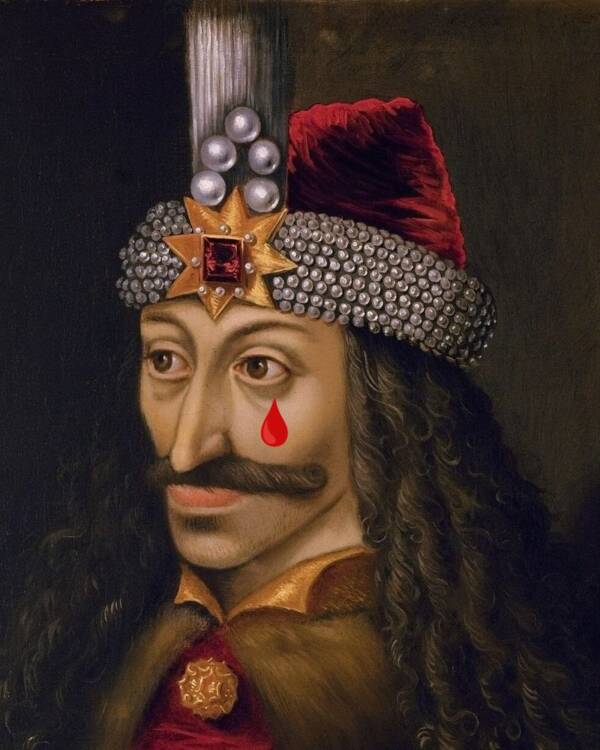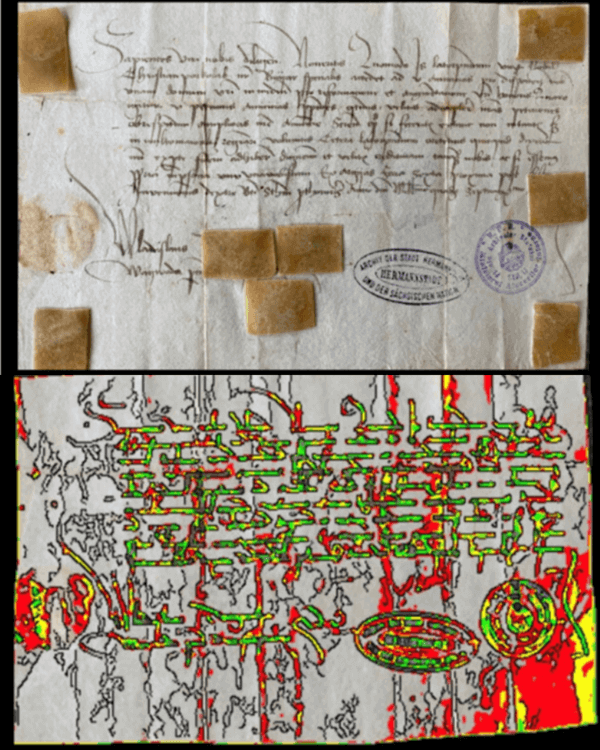Molecules left behind on letters written by the 15th-century Wallachian ruler suggest he may have suffered from hemolacria, a condition that causes blood-tinged tears.

Original image: Public Domain Vlad the Impaler may have suffered from hemolacria, a condition that causes bloody tears.
Ever since Bram Stoker published his classic novel Dracula in 1897, there has been speculation that the vampire was inspired by Vlad the Impaler, the notoriously brutal 15th-century ruler of Wallachia. The debate about whether or not Stoker truly based his famous monster on the prince still rages on, but scientists recently discovered that Vlad had his own chilling connection to blood.
Also known as Vlad III and Vlad Dracula, Vlad the Impaler acted as Voivode of Wallachia on three separate occasions between 1448 and 1477. He was known in Romania for his brutal dedication to keeping his lands safe from foreign invaders, and it’s believed that he was responsible for the deaths of up to 80,000 Ottoman people — many of whom were impaled.
But if he ever cried over any of his victims, it’s likely that the tears rolling down his face were made of blood.
According to Phys.org, a group of researchers from the University of Catania, SpringStyle Tech Design Ltd, Romania National Archives, and Politecnico di Milano, Via Mancinelli recently analyzed the proteins from letters written by Vlad the Impaler during his reign. Some of the molecules they found suggested that the prince suffered from hemolacria, a condition that causes bloody tears.
The scientists looked at three letters that the prince wrote by hand in 1457 and 1475 in an effort to determine whether Vlad suffered from any ailments. They used ethylene-vinyl acetate to retrieve proteins and peptides that Vlad’s hands would have left on the paper, then they analyzed the material using mass spectrometry.
Researchers found 500 peptides, per Live Science, 100 of which were of human origin.

Analytical ChemistryThe top image shows Vlad the Impaler’s original letter with ethylene-vinyl acetate strips applied to capture any biological material. The bottom image shows the letter under flash UV illumination.
From these peptides, the scientists found evidence of ciliopathy, which is a genetic disorder that may cause any number of issues, including kidney disease. They also uncovered signs that Vlad suffered from an inflammatory disease that may have impacted his respiratory tract and his skin.
But their most fascinating discovery came from a letter dated Aug. 4, 1475. The correspondence was addressed to the citizens of Sibiu, a town in modern-day Romania, and announced that Vlad would soon be living in the village.
On this paper, researchers found peptides typically seen in proteins of the retina and tears that suggest Vlad had hemolacria.
The study authors noted that, “He probably suffered, at least in the last years of his life, from a pathological condition called hemolacria, that is, he could shed tears admixed with blood.”
Hemolacria causes blood to mix with tear duct fluids, causing tears to have a bloody tinge or even appear to be made completely of blood. It can be linked to eye injury or bacterial conjunctivitis.
“To our reckoning, this is the first time such research has been carried out and has helped to bring to the limelight the health status of Vlad Dracula the Impaler,” wrote the scientists in their study, which was published in the journal Analytical Chemistry.
It’s unclear why the prince would have suffered from hemolacria or what symptoms he experienced, if any, from the other diseases researchers uncovered.
The scientists also noted that it’s possible the proteins and peptides found on the letters were from other medieval people who touched the paper, though they believe the most prominent molecules belonged to Vlad, as his skin would have had the most contact with the material as he was writing.
While historians continue to argue about the similarities — or lack thereof — between the literary Count Dracula and the real-life Vlad Dracula, this latest discovery reveals that the Romanian prince was was even bloodier than once believed.
After reading about how Vlad the Impaler may have cried tears of blood, go inside Bran Castle, the Transylvania fortress also known as “Dracula’s Castle.” Then, learn about the remains of the “vampire child” that were discovered in Poland.





